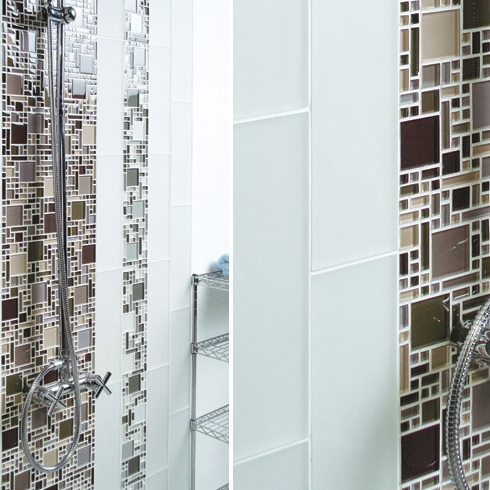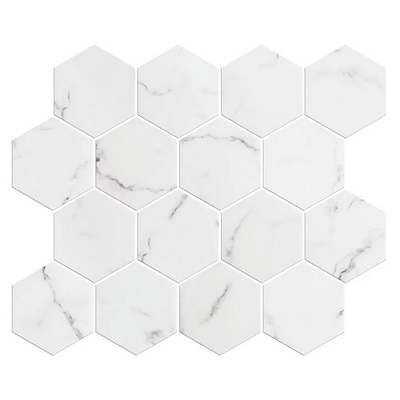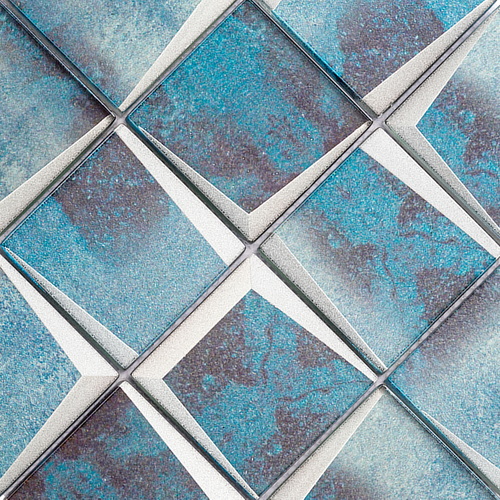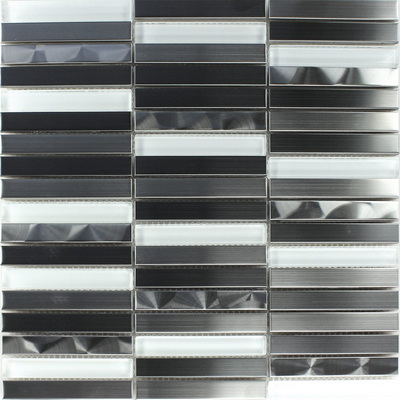Introduction
Mosaic tiles have been used in swimming pools for centuries.
They are a beautiful and durable way to add personality and pizzazz to your pool.
Whether you are looking to install new tiles or renovate an existing pool, this guide will help you choose the perfect mosaic tiles for your swimming pool.
We'll go over the different types of mosaic tiles available, as well as their benefits and drawbacks. We'll also provide tips on installation and care.
So whether you're a first-time buyer or a seasoned pro, read on for all you need to know about mosaic tiles for swimming pools!
The blog will include the following content
Different Materials of Tile for Swimming Pools
The Size of the Swimming Pool Mosaic Tile
The Factor we should Consider When Choosing Mosaic Tile for A Swimming Pool
Maintenance of Swimming Pool
FAQ about Mosaic Tiles in Swimming Pool
Different Materials of Tile for Swimming Pools
Ceramic tiles
Ceramics are the most affordable and versatile. They come in a variety of colors, shapes and designs to create your dream pool space at an excellent price point that you can afford! With so many options available it is easy for homeowners or businesses alike who want something unique without breaking their budget
Stone Tiles
Natural stone has been used for centuries as a durable material that is free of chemicals and unaffected by sunlight. The natural grain patterns create an aesthetically pleasing look, making it especially suitable for outdoor pools
While stone is usually not recommended because of its porousness and tendency to stain easily from water damage
Stone-Look Tiles: A Natural Approach to Style
Natural stone tiles are a great way for homeowners looking at their poolside space or patios, but wanting something less intense. Stone look options come in many different shades and textures that can complement any home décor while also being easy on your wallet because they're not as prone to algae build-up due to their porousness compared with real stones!
Brick tiles
Brick tiles are not as modern or fashionable but they're just about as durable and long-lasting. The one downside to these types of decorating material is that it's porous so water may seep through onto the ground below over time unless annual sealing treatments have been done beforehand
glass mosaic tile for pool
- Glass mosaic tile is a kind of small-size colored decorative glass made of natural minerals and glass powder. It has the characteristics of chemical stability, hot and cold stability, and also has the advantages of constant color, They are versatile and allow builders to create intricate designs with vibrant colors in the right timeframe
- The surface of the glass mosaic is bright and clean, which can reflect the light and make the pool more sparkling. The colors are various and can be matched according to the needs of different designs to create different styles.
- Glass pool mosaic tiles are also one of the most attractive options. Their iridescence and deep colors will not fade. Over time, plaster and aggregate surfaces can become dull and dull, while glass tiles can remain crisp and sparkling almost indefinitely.
- The glass mosaic tile is non-slip and wear-resistant, making it ideal for pool surfaces where safety is a concern.
- The glass mosaic tile is easy to clean and maintain, and its surface is also resistant to staining.
- The glass mosaic tile is an environmentally friendly product that does not off-gas or release harmful chemicals into the air. The silicate glass used in these is an incredibly hardy material. It is highly resistant to corrosion and is virtually impervious to chemical damage.

The size of the Swimming pool mosaic tile
There are a variety of different sizes for swimming pool tiles, so it is important to know what size you need before purchasing them.
The most common sizes are 4x4, 6x6, and 8x8.
However, there are also a few other sizes that are available, such as 10x10 and 12x12.
There are even some odd sizes like 2x2 and 3x3. No matter what size you need, you should be able to find it at your local pool supply store or online.
How you choose the size of the Swimming pool mosaic tile depends on the size of your swimming pool and the decoration style you want
The factor we should consider when choosing mosaic tile for a swimming pool
- Budget: Mosaic tiles can be quite expensive, so it's important to have a firm understanding of how much you're willing to spend before making any decisions.
- Quality Guarantee: Mosaic tile is very durable and can withstand harsh pool conditions. It is also resistant to staining and fading. Mosaic tile with poor quality can not provide the same results as the good ones. Be sure to ask about suppliers’ return policy and whether or not they offer replacement tiles in case of damage.
- Size: Depending on the swimming pool in your house, the size of mosaic tile for it will be various. Besides, you need to have a clear understanding of what your expected swimming pool looks like, which is the guide for you to choose tiles.
- Aesthetics: Mosaic tile comes in a wide variety of colors, patterns, and textures. You can find a style that fits your taste and personality.
- Safety: Mosaic tile is slip-resistant and provides a safe surface for swimming pools.

Maintenance of swimming pool
Removing Organic Stains
1. Pool vacuums
Remove organic stains from the surface of the pool. Greenish-brown organic stains are often caused by algae or leaves deposited on the bottom of the pool, so these need to be cleaned up in time.
Although it is not difficult to remove organic stains, if not removed in time, over time, when the color of organic stains become dull light brown, it will be difficult to remove. Organic stains can take a long time to go from greenish brown to a dull light brown color, which is hard to notice at first.
If there are trees over the pool, you have to beware of leaves, branches, or fruit falling into the pool. You can use a skimmer to clean up this organic debris in time.
Pool vacuums can effectively remove organic debris deposited on the bottom of the pool. You can use either a manual suction machine or an automatic suction machine equipped with sensors.
2. Use acid to clean the pool
For pools with a plaster liner, if there are organic stains that can't be removed, you can drain the pool completely and use acid to wash the pool.
However, you can't do this to your pool too often because each time you do it, you inevitably strip off a thin layer of plaster. However, to restore the bright white surface of your pool, you still need to use acid to wash your pool once every 5 years.
3. Enzyme clarifier
Treat the stain with an enzyme clarifier first, then remove it with a stiff brush.
The enzyme clarifier will remove the greenish-brown organic stain very quickly. Alternatively, you can use an enzyme-based chemical.
Both enzyme clarifiers and enzyme-based chemicals contain biological enzymes that effectively break down organic matter, thus effectively removing organic stains.
Even better, after treating the organic stain with these enzymes, the stain can be removed with a simple brush, or even without brushing, and without causing damage to the pool liner like harsh chemicals can do.
4. Liquid Chlorine clarifier
Clean the pool with a liquid chlorine clarifier. Remove organic stains with a high concentration of liquid chlorine and give the pool a good scrubbing.
You can use a long-handled stiff brush to scrub the pool inside and out, and if you find any organic stains in the process, give it a little drop of liquid chlorine clarifier, and it will disappear quickly.
Note that liquid chlorine is effective for plaster pools, but for vinyl pools, you can't use liquid chlorine to remove surface stains because it will remove the pattern on the liner.
5. Remove localized stains with hydrochloric acid and a stiff bristle brush.
Carefully put the hydrochloric acid through a piece of PVC tubing and onto the stain on the wall or bottom of the pool.
After removing the stain, the following situation may occur the area where the place of stains becomes bright white and new, while its surrounding area is dark in color, because the pool is all a bit dirty except for the area where the stain was removed, so it forms a color contrast with the area where the stain was removed.
After removing the stain, clean the pool with a liquid chlorine clarifier so that there is sufficient chlorine in the pool water to prevent algae outbreaks that can cause the pool water to turn green.

Removing metal stains
1. Preparation
Remove metal stains in the proper way.
To remove metal stains, you can purchase a stain remover for metal stains and leave it in the skimmer basket for a month. The vast majority of the stain removal process starts with this above-mentioned method, which does help in the thorough cleaning of the pool.
Depending on the type and stubbornness of the metal stain, choose the right stain remover. You can consult an expert in pool cleaning and ask him which stain remover is best for your pool.
Turn off all ancillary machinery and equipment near the pool. This includes chlorinators, metal ionizers, generators, UV germicidal systems, and ozone generators.
During the process of removing stains or using highly concentrated chemicals, it is best not to splash water on machines and equipment near the pool that are not part of the filtration system, such as pool heaters, chlorine generators, etc.
2. Reduce the chlorine content
Reduce the chlorine content of the pool water to less than 2 parts per million.
The lower the chlorine content of your pool water, the less ascorbic acid you will need to clean your pool.
Rainwater can reduce the chlorine level in your pool water, and over time, your pool's chlorine level will naturally decrease.
However, if you don't have time to wait, follow the instructions on your pool instructions and add the right amount of baking soda to the pool water, which will quickly reduce the chlorine level.
Add algaecide to the pool water. If the pool water is low in chlorine, algae can grow. To suppress algae, you need to add the appropriate amount of algaecide to the pool water according to the instructions in the algaecide instructions and in proportion to the size of the pool.
3.Remove metal stains with ascorbic acid
Remove metal stains with ascorbic acid. Metal substances can easily react with chemicals.
If you find metal stains in your pool, or organic stains that cannot be removed by the above methods, you can try ascorbic acid, which is specifically used to clean pools. A simple and effective recipe: crush a vitamin C tablet and apply it to the stain, and check if the stain fades after a short while.
Another tip is that ascorbic acid works best to remove iron stains, while citric acid works best to remove copper stains.
To remove large stains, sprinkle ascorbic acid evenly over the surface of the pool water. For the first use, sprinkle 230 grams of ascorbic acid per 38,000 liters of water.
Set the filtration system to "recirculation" mode and let the ascorbic acid work its way through the pool for half an hour.
After half an hour, check to see if the stain has been completely removed from the pool. If there is still residue, continue to add the appropriate amount of ascorbic acid to the pool, and let the filtration system run in "circulation" mode for half an hour, and then check again.

Preventing stain formation
1. Clean your pool regularly
Prevention is better than fixing problems, and regular maintenance is much easier than removing stains and repairing your pool.
Take a water sample once a week and have it tested by a professional, or test it yourself with a test kit. If the pool is not using city water, but well water, then the well water needs to be tested to see if there is a lot of iron in the well water before it is injected into the pool.
If it does, it should not be injected into the pool, as this can easily form iron stains.
Clean the pool once a week with a small amount of clarifier to prevent algae overgrowth.
Brushing the bottom of the pool several times a week can help prevent stains from forming.
2.Regularly check the pool water for metallic substances
You need to regularly check the pool water for metallic substances.
If the metal content is high, it is easy for metal stains to form again. However, the pool water cannot always be free of metallic substances, it can come from the pool's water source or from corroded pool equipment or pipes.
Therefore, it is necessary to insist on testing the pool water for metallic substances once a week.
Use a chelating medium to stop the re-formation of metallic substances. A chelating medium is also called a chelating agent.
Chelating agents prevent metal ions from moving freely in the water and forming metal stains by firmly "catching" the metal ions and combining them into easily collected compounds.
Disposable blotting bags can also remove metal substances.
Place a suction bag in the basket of a skimmer or in the basket of a pump basket filter and it will absorb metals such as copper, iron, manganese, cobalt, silver and nickel from the pool water.
3. Clean the pool of organic debris to avoid the formation of organic stains
Clean the pool of organic debris to avoid the formation of organic stains.
Use a skimmer or automatic vacuum to remove leaves, berries and twigs that have fallen into the pool. In addition, buy a pool cover that works in winter, durable ones are best.
Once you are not swimming, cover the pool tightly with a pool cover.
Mud leaking into the pool or peeling off the pool's surface can lead to dark stains.
If you can't stop these stains from happening, you'll add another layer of dark plaster or liner to the surface of the pool to cover them up.

FAQ about mosaic tiles in swimming pool
Are mosaic tiles good for swimming pool?
Sure, Mosaic tiles are often used for decorative purposes, but they can also be a great choice for your swimming pool.
Compared to other types of tiles, mosaic tiles have several advantages that make them ideal for pool use.If you’re looking for a tile that is both stylish and functional, mosaic tiles are a great option for your swimming pool.
Can you use normal tiles in a swimming pool?
Normal tiles can be used in a swimming pool, but they may not be the best option. Tiles that are specifically designed for pools are more durable and slip-resistant, making them a safer option.
What is the best tile to put around a pool?
When it comes to tiling around a pool, there are a few things to consider. First, you want to make sure the tile is slip-resistant. Second, you want to choose a tile that can withstand constant exposure to water and chemicals. And third, you want a tile that is easy to clean and maintain.
How long do tile pools can last?
Tile pools can last for more than 5 years, provided they are properly maintained. Regular cleaning and sealing will help extend the life of your pool and keep it looking its best.
What is the most popular pool tile color?
The most popular pool tile color is blue, because it evokes the feeling of being in a natural body of water.
Blue is also a very calming color, which can help to create a relaxing atmosphere around the pool.
Other popular pool tile colors include white, grey, and black. These colors create a clean and modern look that is perfect for any pool design.
Conclusion
We hope that this article was helpful and gave you a better understanding of the different materials of tile for swimming pools.
It is important to consider the size of the mosaic tile when making your selection, as well as the way you may need to maintain the pool.
If you have any further questions, please do not hesitate to contact us.

